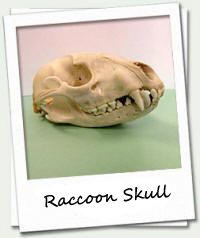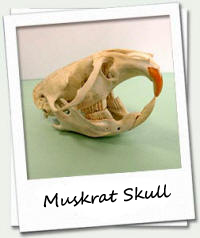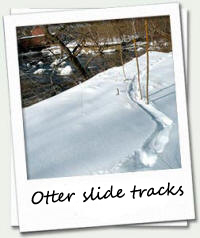|
|
Science: River Life - Mammals
The trees that line the Concord River support a wide range of
wildlife, including many mammals. Many mammals
prefer to live in an ecotone, the edge between two ecosystems, a
space particularly rich with food and shelter. Raccoons, for
example, hunt and gather in forested areas, where they find rodents,
insects, and plants to eat. They also hunt and gather food from
along the river, including insects, mollusks, and frogs.

|

|
|
Raccoons have many different kinds of teeth, which allow for
capturing and eating different types of prey as well as crushing and
grinding a variety of plants. This is omnivorous
dentition. |
The teeth of muskrats are suited for snipping and grinding
plant materials. This is herbaceous dentition. (Muskrats are herbivores). |

|
|
River otters are well-adapted for hunting at night, in the water and
on land, feeding on fish, turtles, and frogs. They are seldom
observed, however, aside from their tracks and slides. |
|
|




